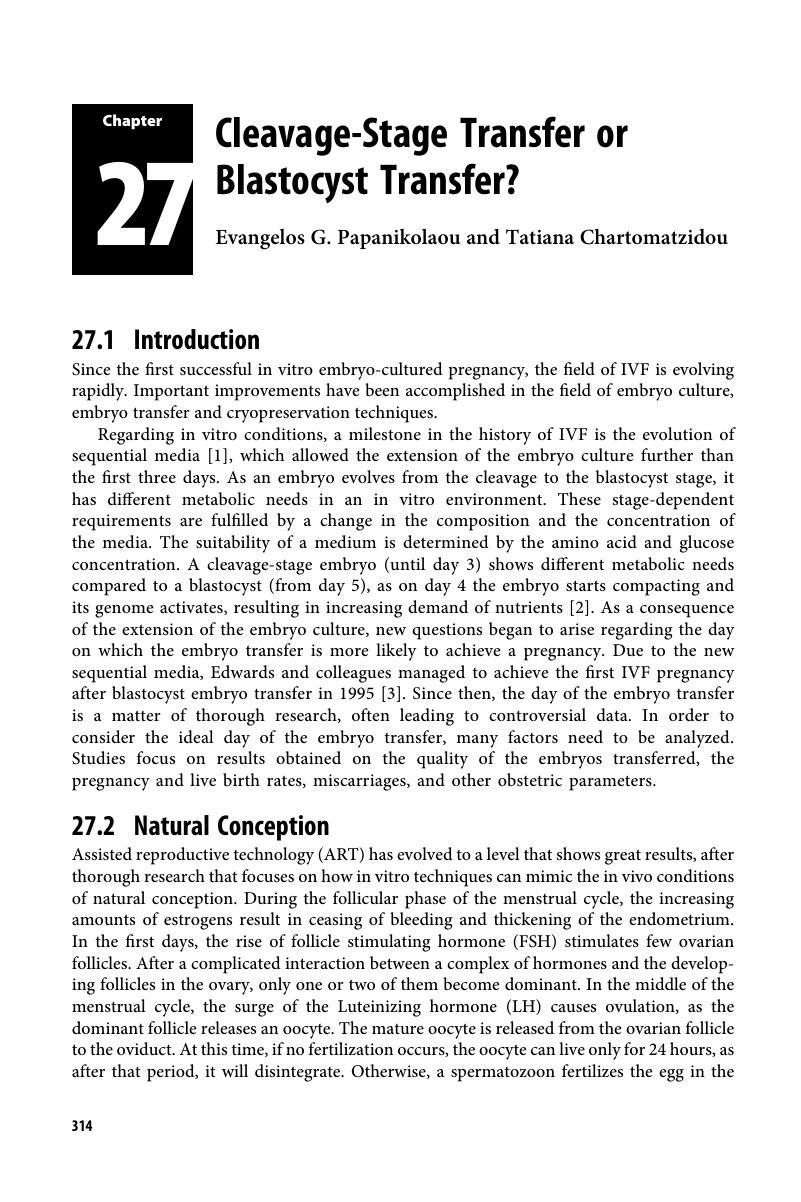Book contents
- How to Prepare the Egg and Embryo to Maximize IVF Success
- How to Prepare the Egg and Embryo to Maximize IVF Success
- Copyright page
- Contents
- Contributors
- Section 1 Oocyte Recruitment
- Section 2 Stimulation for IVF
- Section 3 Supplements to Improve Oocytes
- Section 4 Oocyte and Embryo Culture
- Section 5 Embryo Selection and Transfer
- Chapter 23 Assessing Embryo Morphology to Enhance Successful Selection and Transfer
- Chapter 24 Evaluation of Embryo Quality
- Chapter 25 Metabolomic Screening of Embryos to Enhance Successful Selection and Transfer
- Chapter 26 Preimplantation Genetic Screening of Embryos for IVF
- Chapter 27 Cleavage-Stage Transfer or Blastocyst Transfer?
- Chapter 28 Embryo Transfer Technique
- Chapter 29 Vitrification of Embryos for IVF
- Chapter 30 On The Strategy of “Freezing Only” Embryos
- Chapter 31 Fertility Preservation
- Chapter 32 Stimulating the Poor Responder
- Index
- References
Chapter 27 - Cleavage-Stage Transfer or Blastocyst Transfer?
from Section 5 - Embryo Selection and Transfer
Published online by Cambridge University Press: 04 January 2019
- How to Prepare the Egg and Embryo to Maximize IVF Success
- How to Prepare the Egg and Embryo to Maximize IVF Success
- Copyright page
- Contents
- Contributors
- Section 1 Oocyte Recruitment
- Section 2 Stimulation for IVF
- Section 3 Supplements to Improve Oocytes
- Section 4 Oocyte and Embryo Culture
- Section 5 Embryo Selection and Transfer
- Chapter 23 Assessing Embryo Morphology to Enhance Successful Selection and Transfer
- Chapter 24 Evaluation of Embryo Quality
- Chapter 25 Metabolomic Screening of Embryos to Enhance Successful Selection and Transfer
- Chapter 26 Preimplantation Genetic Screening of Embryos for IVF
- Chapter 27 Cleavage-Stage Transfer or Blastocyst Transfer?
- Chapter 28 Embryo Transfer Technique
- Chapter 29 Vitrification of Embryos for IVF
- Chapter 30 On The Strategy of “Freezing Only” Embryos
- Chapter 31 Fertility Preservation
- Chapter 32 Stimulating the Poor Responder
- Index
- References
Summary

- Type
- Chapter
- Information
- How to Prepare the Egg and Embryo to Maximize IVF Success , pp. 314 - 326Publisher: Cambridge University PressPrint publication year: 2019



